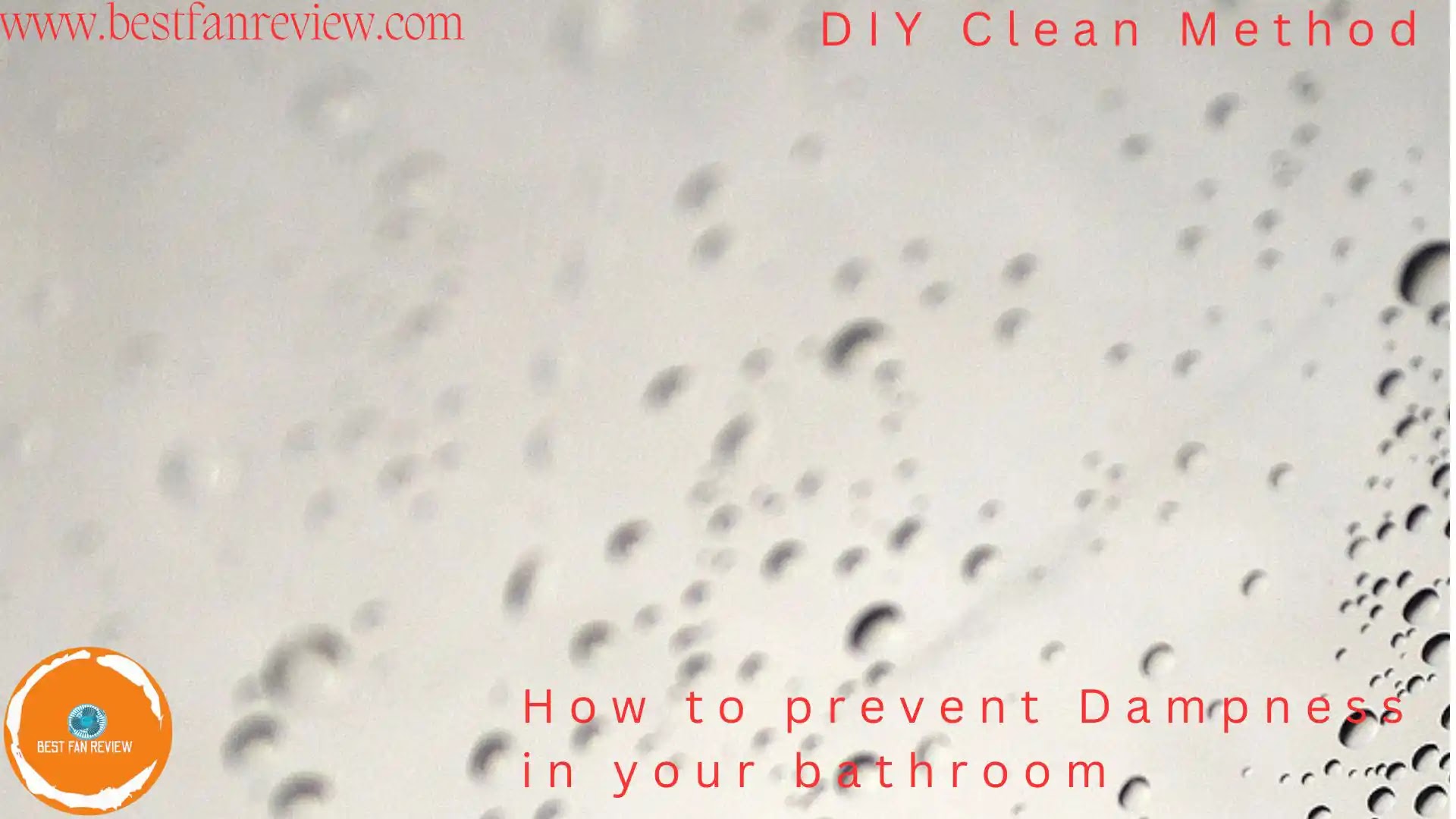Dampness is crucial for the bathroom ecosystem How to Prevent or reduce Dampness in your bathroom without a window or exhaust fan Manage moisture and humidity before mold begins to grow.
In this article I will explore the DIY genuine way to reduce Dampness in your bathroom without an exhaust Fan.
A clean, well-functioning exhaust fan is the best way to keep your bathroom dry and mold-free. Unfortunately, not all homes have this feature, and if you live in a rental apartment or remodeling your bathroom to add the best quality exhaust fan isn't in your budget, you'll need to look for options. Another way to prevent your bathroom from always being wet and inviting. mold.
(toc) #title=(Table Of Contents: )
Most tips on how to control humidity in your bathroom without an exhaust fan begin and end with instructions for opening a window to let the moist air escape.
And while this may work for some people, there are others whose bathrooms have no windows, windows that don't open, or windows that open but don't provide enough ventilation to make a difference.
What is the bathroom dampness better understanding
Bathroom humidity refers to the presence of excessive moisture or high water moist in the bathroom. This is a common problem in bathrooms due to frequent use of water for activities such as showering, bathing, and washing hands.
Problem associated with the dampness of bathroom
Humidity in the bathroom can cause a variety of problems, including:
1. Mold growth:
Excessive humidity creates a favorable environment for mold growth. These fungi can grow on walls, ceilings and other surfaces, causing health problems and unsightly stains.
2. Structural damage:
Prolonged moisture can damage the structural integrity of your bathroom, causing problems such as damaged drywall, peeling paint, and even rotting of wood or other building materials.
3. Unpleasant smell:
Humid environments can cause musty or unpleasant odors, making the bathroom less comfortable and less attractive.
4. Health problems :
High humidity and mold growth can worsen respiratory problems and allergies, potentially affecting the health of bathroom users.
5. Aesthetics:
Moisture can cause peeling paint, peeling tiles and damage to grout, negatively affecting the overall appearance of the bathroom.
Before knowing how to prevent Dampness in your bathroom first know about the cause of the humidity in the bathroom
5 Main Causes of damp on Bathroom Walls
Because the bathroom is constantly exposed to a lot of moisture, it is easy to get damp. The biggest disadvantage of a wet bathroom is that it can damage the building and create an unhealthy indoor environment due to mold growth.
Additionally, bathroom tiles can become loose and grout can fall out over time. What causes dampness on bathroom walls? Below are the main causes of Dampness on bathroom walls.
1 . Condensation:
Condensation is one of the main causes of humidity which occurs when warm, moist air or water vapor forms water droplets on cold bathroom surfaces such as wall tiles, windows, ceilings and bare walls.
To reduce condensation in the bathroom, open the windows and turn on the exhaust fan so that moist air is replaced with cool, dry air.
2. Leaking roof:
Water can seep into the bathroom walls and ceiling from the roof or garden. To control moisture, the roof must be well maintained and in good condition to contain water leaks.
3 Leaks in pipes:
If there is a leak in hidden PVC pipes in the bathroom, it can also lead to moisture. Therefore, leaking pipes must be fixed and joints must be sealed with tape during installation.
We strongly recommend using silicone sealant at the joints of bathroom fixtures such as the bathtub, toilet, closet and tiles to prevent leaks at these points.
4. Cracks in walls:
Rainwater tends to enter the building through cracks in external walls and causes dampness in bathrooms and other areas of the house.
5. Leaks from adjacent bathrooms:
Whether it is a high-rise building or a detached house, any leaks from an adjacent bathroom on the same floor or from the floor immediately above the bathroom can cause out moisture.
How to prevent or reduce Dampness in your bathroom without an exhaust fan
Mold thrives in damp places, so your goal is to keep the surfaces and air in your bathroom as dry as possible. Here's how to do it without an exhaust fan or a useful window:
Here are some of the most effective ways to reduce humidity in a bathroom without an exhaust fan or (useful) window.
#1 Clean (or scrape) the wall:
After a shower or bath, if left alone, water droplets on the wall will evaporate and make the bathroom more humid. Instead, get into the habit of wiping down shower/tub walls and the rest of the bathroom with a dry towel – or better yet, a squeegee – to remove that moisture.
#2 Run the dehumidifier:
Invest in a small dehumidifier for your bathroom and run it during and after showering, or even more often if your bathroom is often humid.
#3 Clean puddles:
In addition to the walls, take the time to clean up any puddles on the floor, on the counter, or around the sink.
#4 Bring a portable fan:
Place a standing/floor fan or table fan in a place that won't get wet and place it so that it blows moist air out of the bathroom door.
Of course, this means you'll have to open the bathroom door at least a little while showering, but if you can it can make a difference.
What are the permanent solutions for the dampness of bathroom walls?
One of the best ways to control humidity is to tile your bathroom walls from floor to ceiling. Before tiling, install a plastic film or elastic sheet on the support.
Use epoxy mortar to grout tiles because it contains epoxy resin combined with filler powder to form waterproof mortar.
Ensure good drainage by giving the floor covering an appropriate slope so that all water flows toward the drain.
Conclusion:
In summary, To reduce humidity in a bathroom without an exhaust fan or suitable window, several effective strategies can be used. First, wipe down walls and surfaces after showering to prevent moisture buildup. Using a small dehumidifier during and after showering helps control humidity.
Additionally, it may be helpful to quickly clean up any puddles on the floor and strategically place a portable fan to push moist air out. Five common causes of damp on bathroom walls include condensation due to temperature differences, roof leaks, pipe leaks, wall cracks and leaks in adjacent bathrooms. Tiling bathroom walls from floor to ceiling and ensuring good drainage are recommended solutions to effectively prevent moisture.
Thank you for visiting this page how to prevent or reduce Dampness in your bathroom without exhaust fan. I hope you like our guide. If you like this send this with your friends or loving one . Thank you!



